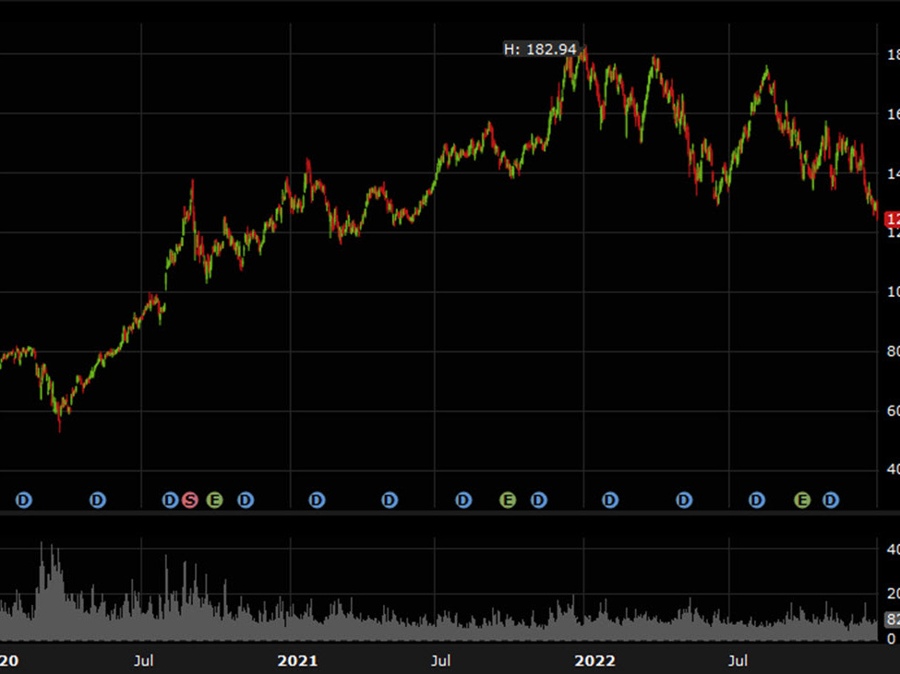Tesla was always something of a bubble and had a long list of detractors when its valuation reached stratospheric levels. At the same time, Elon Musk’s online persona has become a liability to the company, changing the investment thesis.
None of those things apply to Apple. Yes, there are the usual concerns about iPhone demand and production but this isn’t a company that’s going away.
That’s what makes today’s 4% drop to levels below the June low most concerning. This is mostly a macro story and a sign of compressing multiples — classic bear-market trading.
The company is now trading at 20x 2023 earnings, which certainly isn’t crazy for a company with a wide moat. What the market may be signaling is that’s simply too high in a world where bonds pay 4% and uncertainty is high. Warren Buffett paid about 10x EV/EBITDA when be bought Apple for one of the best trades of all time.
The 2023 forward EBITDA estimate is $130 billion against an EV of $2.1 trillion, which is about 16x. To get back to a Buffett level, it would need to fall another 35%. You could make the argument that it might even need to be below the 2015-18 multiples when Buffett bought due to higher interest rates and less upside from growth (though I certainly wouldn’t make that argument).
In any case, a 35% drop would take shares of AAPL to around $80, which doesn’t seem crazy looking at the longer-term chart.
You weep to think what would happen to the broader market if Apple falls another 35%.
Ultimately, I think the consumer holds up this year and signs on inflation are improving so it’s certainly not my base case but it’s worth keeping in mind that if the situation devolves, so due the valuations.
